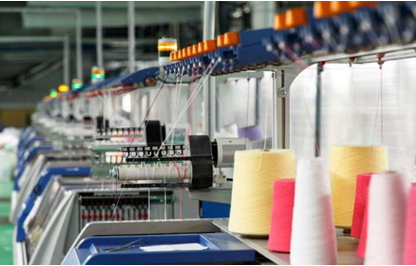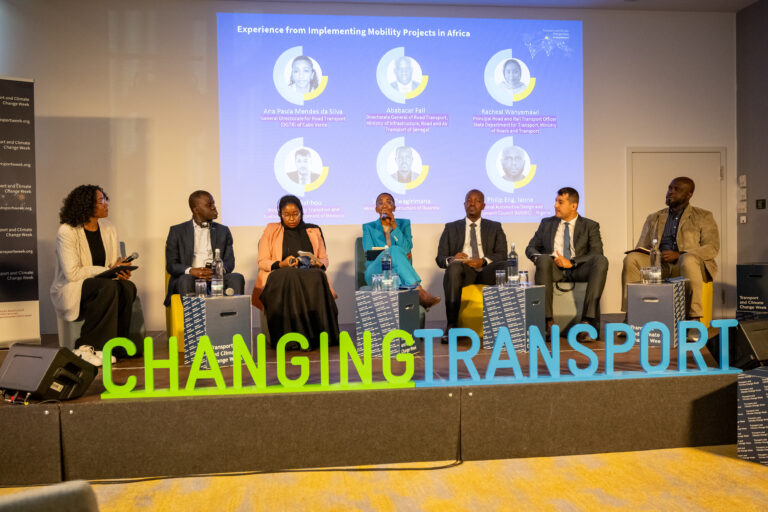Pakistan’s Textile and Apparel Policy 2025–30 proposes roadmap to boost exports, competitiveness – Independent News Pakistan

Report on Pakistan’s Textile and Apparel Policy 2025-30 and Alignment with Sustainable Development Goals (SDGs)
Introduction and Policy Framework
The Government of Pakistan has formulated a comprehensive framework, the Textile and Apparel Policy 2025–30, designed to enhance the global competitiveness of its largest export-oriented sector. The policy provides a detailed roadmap for expanding exports, attracting investment, and promoting sustainable industrial growth, thereby aligning national economic objectives with the global Sustainable Development Goals (SDGs).
Policy Vision and Mission: A Commitment to Sustainable Growth
The policy’s vision is to establish Pakistan as an internationally competitive, sustainable, and compliant high-value-added manufacturing hub for textiles and apparel. This vision directly supports several key SDGs:
- SDG 8 (Decent Work and Economic Growth): By leveraging the country’s skilled labor force to drive export-led industrial development and socio-economic growth.
- SDG 9 (Industry, Innovation and Infrastructure): By fostering an ecosystem that encourages innovation, value addition, and technological transformation.
- SDG 12 (Responsible Consumption and Production): By maximizing resource efficiency and upholding environmentally responsible and transparent business practices.
Strategic Objectives and Economic Targets
The policy outlines five core strategic objectives to achieve its vision:
- Creating a conducive and cost-competitive business environment.
- Promoting value-added products utilizing local inputs.
- Attracting export-led investment for modernization and technology.
- Ensuring sustainable manufacturing practices in line with global standards.
- Improving workforce quality through training and capacity building, contributing to SDG 4 (Quality Education) and SDG 8.
Export projections for 2029–30 range from $30.08 billion to a high-growth scenario of $41.51 billion, underscoring the policy’s ambition to significantly advance SDG 8.
Key Interventions for Sustainable Industrialization (SDG 9)
Economic and Infrastructural Enhancements
- Ensuring regionally competitive energy tariffs to promote efficient and sustainable industrial operations, aligning with SDG 7 (Affordable and Clean Energy).
- Improving access to credit through enhanced export financing and insurance mechanisms.
- Rationalizing taxation and facilitating infrastructure development, including the establishment of integrated textile and apparel parks.
Product and Market Diversification
- Encouraging a strategic shift from cotton-based products to a diversified mix including manmade fibers, technical textiles, and sustainable materials.
- Upgrading ginning and spinning facilities to improve productivity and quality, fostering innovation within the industry (SDG 9).
Emphasis on Sustainability and Responsible Production (SDG 12)
A central pillar of the policy is its commitment to sustainability, labor standards, and environmental protection. This focus is critical for integrating Pakistan into global value chains that prioritize ethical and responsible sourcing.
- Green Technologies: The policy mandates the adoption of green technologies and efficient resource management to reduce the industry’s environmental footprint.
- Compliance and Standards: It underlines the necessity of complying with international environmental and social safeguards.
- Circular Economy: A key theme is aligning the sector with global standards on ethical manufacturing, traceability, and circular economy practices.
These measures directly address SDG 12 (Responsible Consumption and Production) and SDG 13 (Climate Action), while improved labor standards contribute to SDG 8.
Institutional Framework and Partnerships (SDG 17)
The policy’s success relies on institutional reforms and robust collaboration. It recommends strengthening coordination between the Ministry of Commerce, the Textile Wing, and the Trade Development Authority of Pakistan. The framework emphasizes that policy continuity and strong engagement between public and private stakeholders are essential for implementation, reflecting the principles of SDG 17 (Partnerships for the Goals).
Analysis of Sustainable Development Goals in the Article
1. Which SDGs are addressed or connected to the issues highlighted in the article?
-
SDG 8: Decent Work and Economic Growth
- The article focuses on Pakistan’s Textile and Apparel Policy, which aims to “expand exports,” “drive export-led industrial development and socio-economic growth,” and contribute “substantially to national income and employment.” These objectives are central to promoting sustained, inclusive, and sustainable economic growth.
-
SDG 9: Industry, Innovation, and Infrastructure
- The policy’s goal is to “promote sustainable industrial growth” by creating a “conducive business environment,” fostering “technological transformation,” encouraging “investments in modernization and technology,” and facilitating “infrastructure development.” This directly aligns with building resilient infrastructure and fostering innovation.
-
SDG 12: Responsible Consumption and Production
- The article repeatedly emphasizes “sustainability, circularity, and inclusivity.” The policy calls for “sustainable manufacturing practices,” the “adoption of green technologies, efficient resource management,” and alignment with “circular economy practices,” all of which are core components of ensuring sustainable consumption and production patterns.
-
SDG 17: Partnerships for the Goals
- The success of the policy is explicitly linked to “inter-ministerial coordination,” “institutional reforms,” and “strong engagement of both public and private stakeholders.” This highlights the importance of partnerships and policy coherence to achieve sustainable development.
2. What specific targets under those SDGs can be identified based on the article’s content?
-
Under SDG 8 (Decent Work and Economic Growth):
- Target 8.2: The policy aims to achieve higher levels of economic productivity through “diversify products and markets,” “technological transformation,” and “innovation and value addition.”
- Target 8.8: The framework’s emphasis on “compliance with international standards,” “labor standards,” and “ethical manufacturing” directly relates to protecting labor rights and promoting safe working environments.
-
Under SDG 9 (Industry, Innovation, and Infrastructure):
- Target 9.2: The vision to establish Pakistan as an “internationally competitive, sustainable, and compliant high-value-added manufacturing hub” aligns with promoting inclusive and sustainable industrialization.
- Target 9.3: The proposal to improve “access to credit through export financing and insurance mechanisms” supports increasing the access of industrial enterprises to financial services.
- Target 9.b: The focus on “innovation,” “modernization and technology,” and building “institutional capacity to provide research” supports domestic technology development and innovation.
-
Under SDG 12 (Responsible Consumption and Production):
- Target 12.2: The mission to “maximizes resource efficiency” and the call for “efficient resource management” and use of “sustainable materials” directly addresses the sustainable management and efficient use of natural resources.
- Target 12.6: The policy encourages companies to adopt sustainable practices by calling for “the adoption of green technologies,” “compliance with environmental and social safeguards,” and alignment with “circular economy practices.”
-
Under SDG 17 (Partnerships for the Goals):
- Target 17.14: The article stresses the need for “long-term government commitment, inter-ministerial coordination, and consistent implementation of interventions” to enhance policy coherence for sustainable development.
- Target 17.17: The success of the framework is noted to be dependent on “strong engagement of both public and private stakeholders,” which encourages effective public-private partnerships.
3. Are there any indicators mentioned or implied in the article that can be used to measure progress towards the identified targets?
-
Quantitative Indicators:
- Value of Exports: The article provides specific financial targets, “projecting total textile and apparel exports between 30 billion and 41 billion US dollars by 2029–30.” This serves as a direct indicator for economic growth (SDG 8) and industrial performance (SDG 9).
-
Qualitative and Implied Indicators:
- Manufacturing Value Added: The goal to become a “high-value-added manufacturing hub” implies that an increase in the manufacturing sector’s contribution to GDP would be a key indicator of progress (SDG 9).
- Investment Levels: The policy’s aim to “attract investment” and encourage “investments in modernization and technology” suggests that the volume of domestic and foreign investment in the sector is a measurable indicator (SDG 9).
- Adoption of Sustainable Practices: Progress can be measured by the number of textile firms adopting “green technologies,” achieving compliance with “environmental and social safeguards,” or implementing “circular economy practices” (SDG 12).
- Workforce Skill Level: The objective of “improving workforce quality through training and capacity building” implies that the number of workers trained or the investment in skill development programs would be a relevant metric (SDG 8).
- Cost of Doing Business: The policy aims to ensure “regionally competitive energy tariffs” and “rationalizing taxation.” Reductions in these costs would serve as an indicator of a more conducive business environment (SDG 9).
4. Table of SDGs, Targets, and Indicators
| SDGs, Targets and Indicators | Targets | Indicators |
|---|---|---|
| SDG 8: Decent Work and Economic Growth |
|
|
| SDG 9: Industry, Innovation and Infrastructure |
|
|
| SDG 12: Responsible Consumption and Production |
|
|
| SDG 17: Partnerships for the Goals |
|
|
Source: inp.net.pk
What is Your Reaction?
 Like
0
Like
0
 Dislike
0
Dislike
0
 Love
0
Love
0
 Funny
0
Funny
0
 Angry
0
Angry
0
 Sad
0
Sad
0
 Wow
0
Wow
0
















































/environment-climate-change-and-health-(ech)/water-sanitation-hygiene-and-health-(wsh)/landfill-tuvalu-36092.tmb-1200v.jpg?sfvrsn=5c21fe40_1#)

.jpg.webp?itok=0ZsAnae9#)


























